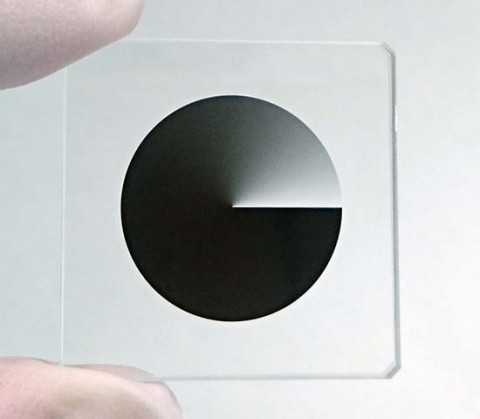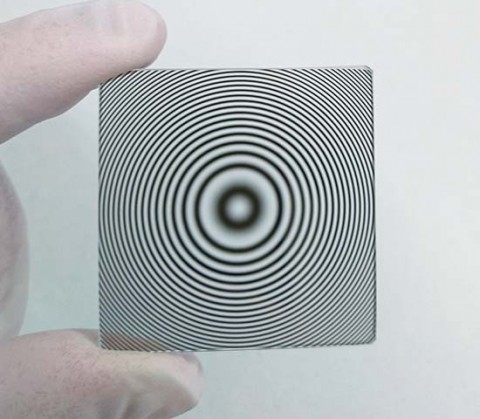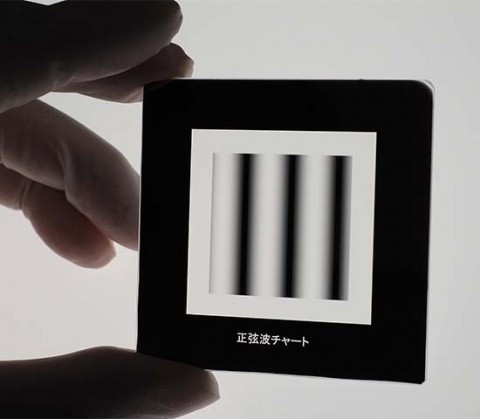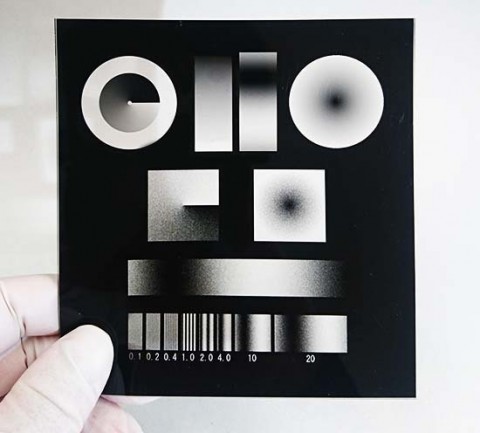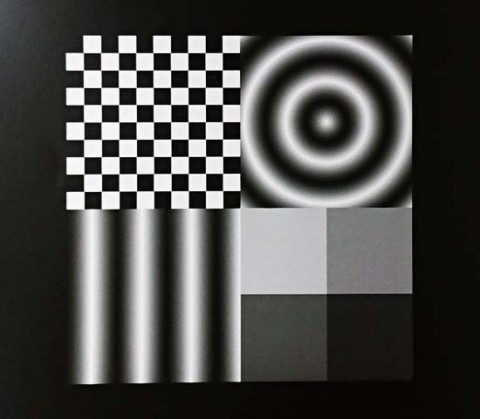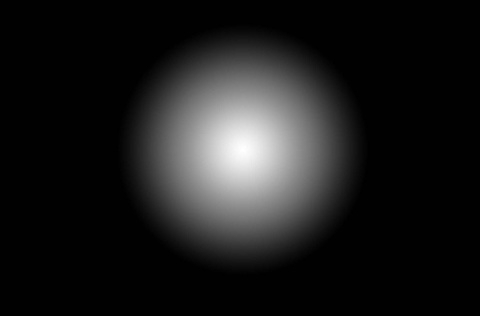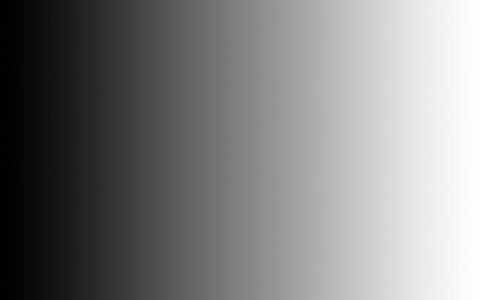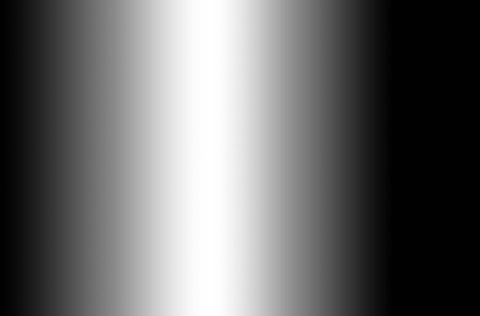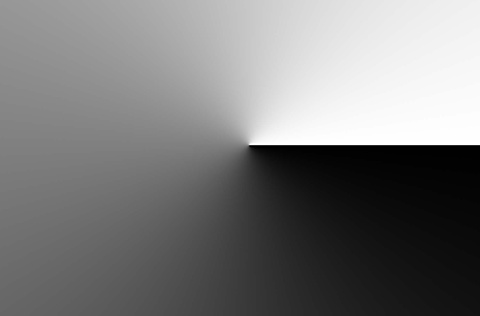A gradation pattern is a pattern with smooth changes in transmittance or reflectance. EQUA allows you to design not only linear changes, but also various curves such as sine waves and parabolas.
There are two types of transmission type: film type and glass type. The film type uses unique data processing and a unique precision exposure process to create extremely smooth and freely changing gradation patterns in density. For the glass type, we use our unique data processing technology and high-precision drawing equipment to enable smooth gray scale expression with minute dots as small as 2 μm. Reflective types create patterns using the rich neutral color expression of photographic paper.
Examples of production using Glass Substrate
Example of production using PET Substrate
Gradation Patterns
Using gradation patterns, the light transmittance rate can be varied smoothly. These can for example be used as lighting control patterns. The transmittance rate can be varied not only linearly but based on all sorts of curves, including sine waves and parabolas, and in addition to glass, PET, and the like, paper media can be used as substrates as well.


